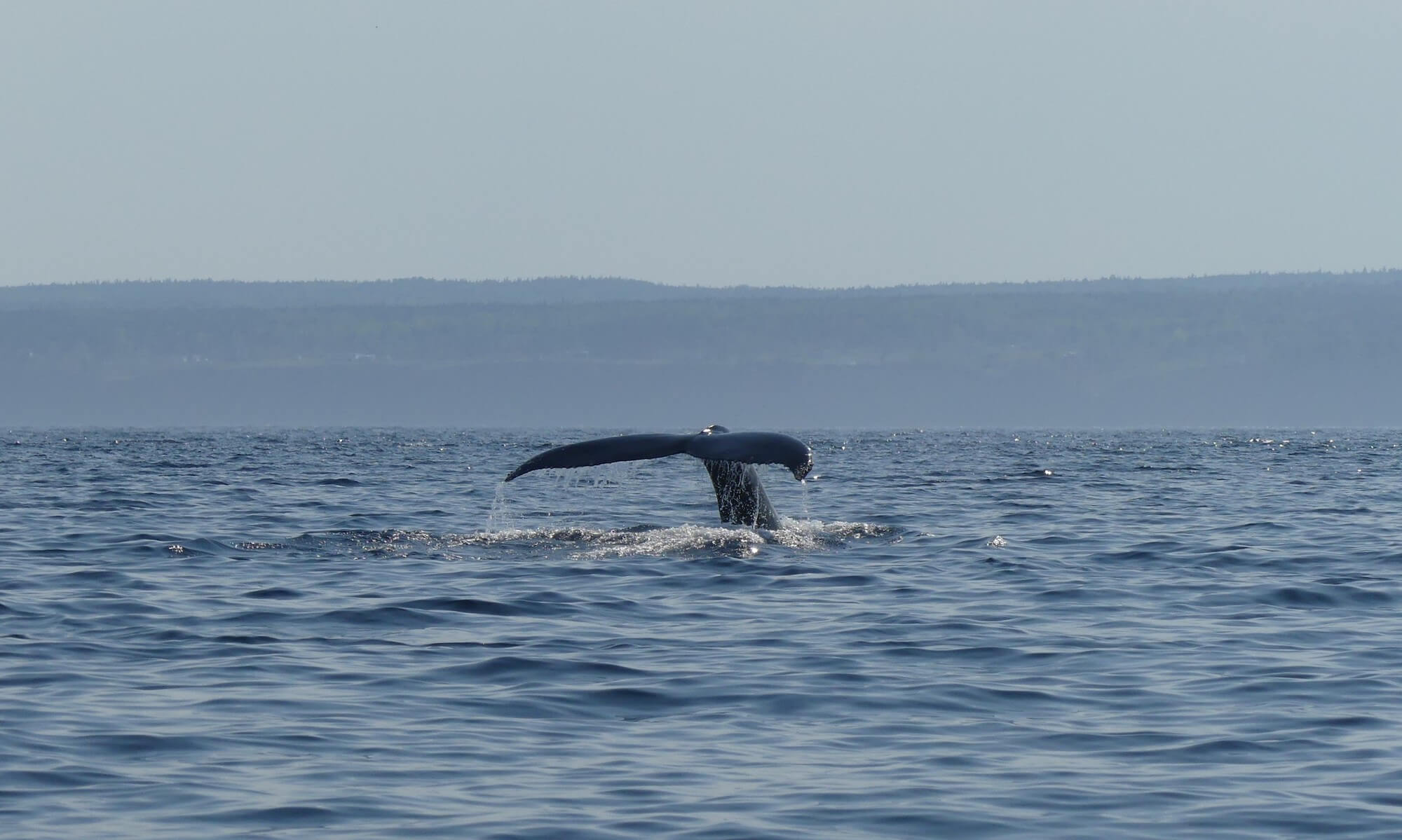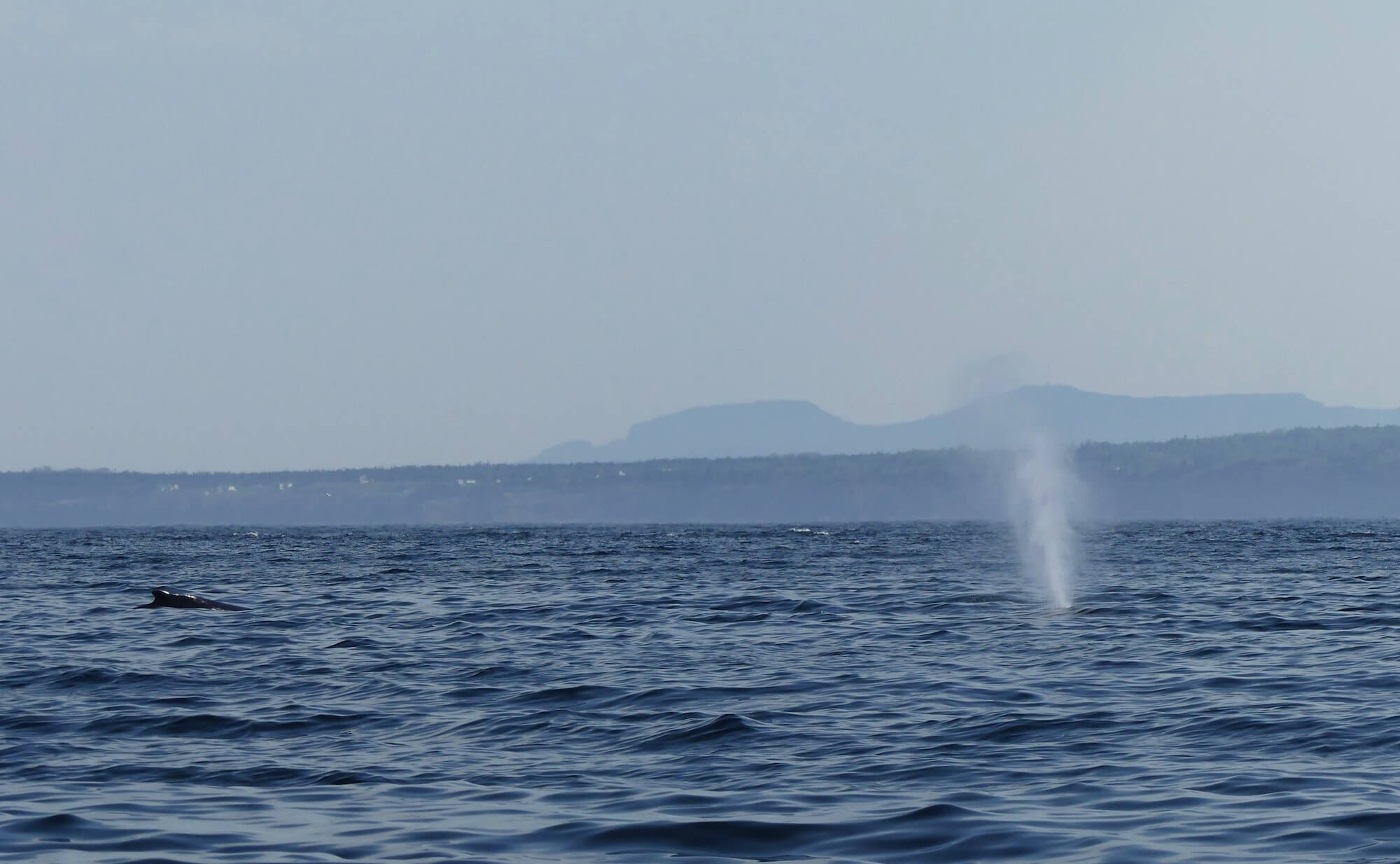After a quiet start to the season, humpback whales are now making a long-awaited return to Gaspésie, with between six and eight individuals having been observed over the past few days! In the estuary, the situation is quite different for the time being: a minke whale here, a group of belugas there, but no signs of any large cetaceans for the past few weeks.
Humpback in the Gaspé
The start of the whale-watching cruise season has gotten off to a good start in Gaspé Bay. Unfavourable weather did not allow for departures every day, but the whales were there.
The presence of several minke whales, harbour seals and a few porpoises is remarkable, but what is particularly impressive is the six to eight humpback whales being observed on a daily basis.
For the Marine Mammal Observation Network, whose team has been on site to train observer members in data collection, the two trips out to sea on June 1 were an opportunity to enjoy some great sightings. “We saw several humpbacks on both cruises, one in the morning and the other in the afternoon, at least six individuals in all,” comments Mélissa Martel, project manager for the organization. “We also observed harbour seals with pups as well as a few porpoises.”
Concerns in the estuary
A fog of anxiety hovers over the Tadoussac area. According to some of the regulars who have worked for years in the whale-watching industry, such a calm start to the season is unusual. GREMM collaborator, naturalist and wildlife photographer Renaud Pintiaux recently published some field notes to share his thoughts on the topic.
However, how a season starts is not necessarily an indicator of how the rest of the summer will transpire. Several species migrate farther south during the winter, and may still be working their way back. The presence of capelin in the last few days could be a sign of the imminent arrival of large cetaceans. When these silvery fish that whales prey on reproduce on sandy or gravel beaches, it is said that they are “rolling.” For GREMM Education Director Patrice Corbeil, this year is similar to other years such as 2019. He also believes that whales often arrive shortly after the capelin reproduce. We’ll find out soon enough!
For one marine mammal enthusiast visiting the area for a few days, the sight of cetaceans roaming the mouth of the Saguenay Fjord is as delightful as it is breathtaking. “I saw several belugas near the rocks in front of the Marine Mammal Interpretation Centre and even a minke whale at the tip of Pointe de l’Islet. I was elated!” Harbour seals were observed lazing on the rocks in the Saguenay-St. Lawrence Marine Park. A few harp seals have also been reported in the sector.
The whelping (or pupping) period for harbour seals is still underway. Several observers have also come across young seals recently, namely in Gallix, Franquelin or La Malbaie. Cohabitation on the beaches is therefore essential and a distance of 100 metres from these pinnipeds must be maintained.
In Saint-Irénée, one local resident was moved by how much she was able to observe just by scanning the river: “I saw belugas daily, except for the last few days when the weather was not very nice. The highlight was last Sunday when I saw a female beluga with her little one. It was dark grey in colour.”
Other sightings from the north shore are rather scattered, with a minke whale in Franquelin, a few seals in Pointe-des-Monts, and a handful of grey seals in Havre-Saint-Pierre. Additionally, a few porpoises, belugas and seals were seen during a boat trip in the estuary between Matane, Franquelin and Pointe-des-Monts. From Longue-Pointe-de-Mingan, the presence of approximately three minke whales, harp seals and about twenty grey seals was reported at a haulout site.







